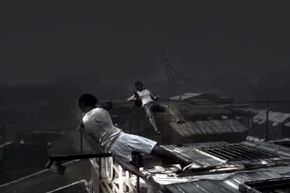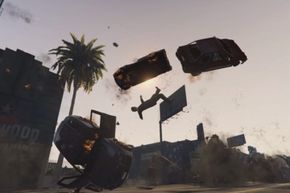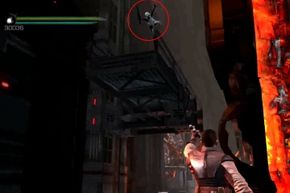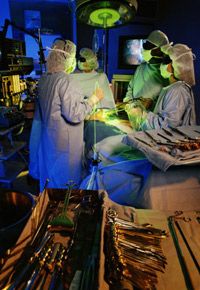Death is always a disappointment. That's true even in video games. It means the end of a combat round, the end of a level and perhaps the loss of minutes (or hours) of unsaved gameplay achievements. But in games from an earlier era, death wasn't just a bummer — it was a graphical disappointment, too.
Your kaput character's body would flip awkwardly from vertical to horizontal. Perhaps it would fragment or disappear. Death always looked exactly the same, thanks to older keyframe animation, where each action, such as jumping and falling, is repeated ad nauseum. These lame, scripted deaths were so unrealistic that they detracted from gameplay quality.
Advertisement
Since the early days, digital death has changed in amazing ways. Everyone knows that games have gotten gorier, with untold gallons of blood and splintering bones being animated everyday across the globe. But the realism of slumping, dead bodies has changed dramatically, too, thanks in large part to ragdoll physics.
Ragdoll physics is a category of procedural animation that displays human-like figures with more realistic motion. Sometimes the effect is eerily accurate. Other times the results are often overemphasized to the point of silliness, with arms and legs and torsos flopping and twisting like, well, a ragdoll that imbibed a few too many tequila shots.
When integrated into gameplay with care, ragdoll physics adds realism, particularly to screens with non-stop carnage. For example, if you're playing a first-person shooter in which you blast other characters with a variety of weapons, your victims will react differently each time you shoot them. Blasting an enemy in the shoulder causes the top side of the body to flail backwards as it absorbs the blow. Pop them in the gut, though, and the character might double over and then collapse forwards in the beginnings of virtual death throes.
These might sound like inane or simplistic video effects. But in reality, these animations rely on complex physics and math, and programmers are continually trying to find better ways to make onscreen objects more accurately resemble our analog world.
Advertisement






